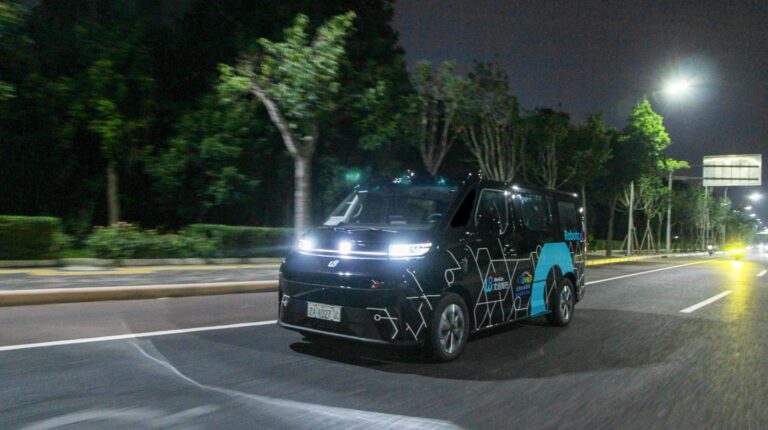WeRide has received approval to conduct late-night testing of its robotaxi on public roads within the Beijing high-level autonomous driving demonstration zone from 10pm to 7am. This milestone is a “crucial step” in building a 24/7 autonomous ride-hailing network in Beijing, the company says, and lays lays the groundwork for all-weather, all-day autonomous mobility services.
Beijing’s complex night-time road conditions, characterized by low lighting, environmental interference – heavy rain in the summer and snow in the winter – pose significant challenges for autonomous driving systems. These conditions increase the importance of maintaining effective sensor fusion between lidar and cameras under low-light conditions.
To address potential visibility issues at night, WeRide’s robotaxi is equipped with more than 20 sensors, including high-precision, high-dynamic cameras and high-line lidars across the vehicle. Combined with its multi-sensor fusion algorithm and high-performance computing platform, the system achieves 360° blind-spot-free coverage in a detection range of up to 200m.
Extreme weather conditions such as rain, dust and heavy snow pose challenges to autonomous driving stability as well. Alongside automotive-grade sensors and “stringent assembly processes”, WeRide uses self-developed smart sensor cleaning systems that detect dirt and moisture, triggering automatic cleaning.
In related news, WeRide and Uber Technologies recently started operating their robotaxis on Al Reem and Al Maryah Islands in Abu Dhabi, in partnership with the Integrated Transport Centre. Read the full story here


